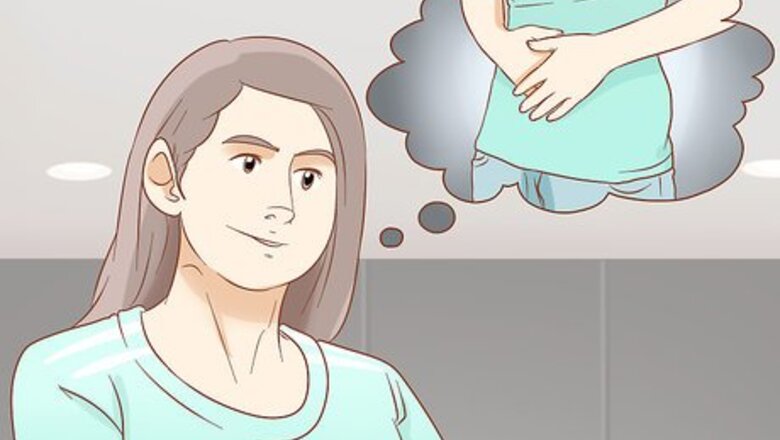
views
Changing your Attitude and Actions
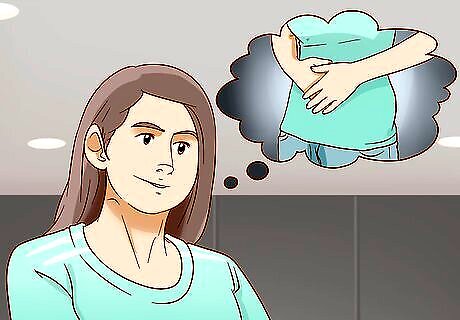
Choose a single illness to fake and stick to it. People most commonly imitate a heavy cold or a fever as you have likely had these illnesses before and can easily mock your symptoms. Faking a migraine, diarrhea, or a stomach ache are also great options because you don't have to go too in-depth into your symptoms — nobody wants to hear too much detail about your BMs, after all. The most important thing is not to get symptoms mixed up. If you want to fake having a migraine, don't complain about your stomach, and if you are faking having diarrhea, don't start sneezing.

Think back on how you look when you are sick, and imitate your expressions. Think back to a time when you were sick with some illness, like a cold or the flu. Try to remember the physical sensations and symptoms and how you acted. Did you move more slowly, groan and moan, shiver, etc.? Repeat these actions as best you can. Ponder how you felt and acted the last time you really were sick to make your act more believable.
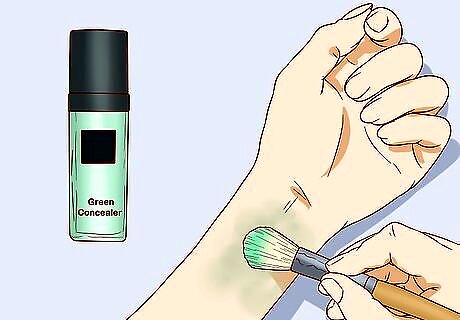
Use concealer makeup or white flour to make your skin more pale. A little bit of green concealer makeup can make your skin look a little more sickly, whereas a sprinkle of white flower can make you look pale and nauseous. Concealer makeup is more effective, but a little white flour can do the job in place of makeup if you have none available.

Wear baggy clothes or wrap yourself up in blankets. No matter the illness, sick people like to stay warm and surrounded by many layers. Wrap yourself up in blankets or warm clothes both the night before and the day of the fake illness. You can shiver or shake slightly to imitate symptoms of being cold, even under the blankets, as sick people often feel both hot and cold at the same time.
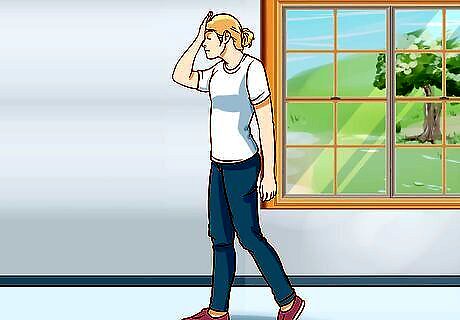
Act slow and uncoordinated, bumping into things and walking slowly. Just about every illness comes with some reduction in coordination. Whether you are pretending to have a migraine or a bad cold, react slower to things and act unaware of your surroundings.
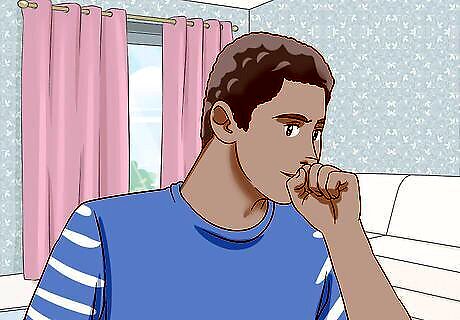
Sniffle, cough, and complain about your fake symptoms often. To fully sell the act, you should act as sick as you can. If you want to pretend to have a cold or the flu, sniffle and cough every few minutes at the least, whereas for other issues be sure to complain about your fake symptoms and rub your belly or forehead, depending on what illness you want to imitate.
Faking Specific Symptoms and Injuries
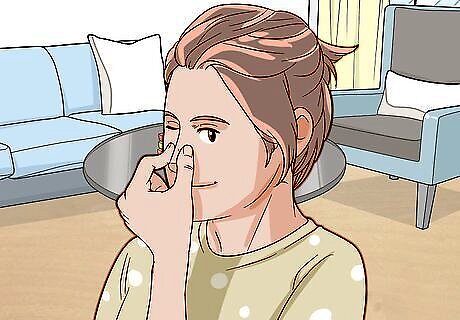
Imitate a fever or the flu by faking a cough, congestion, and exhaustion. Breathe only through your mouth, which can indicate stuffy sinuses, and talk and react to things slower. You can fake a slight cough and sharp sniffs to appear more convincing. It is hard to fake your nose running, but you can make your eyes look like they are watering by consciously not blinking for longer than usual, which will naturally make your eyes water slightly. Do this just before talking to people for maximum effect.
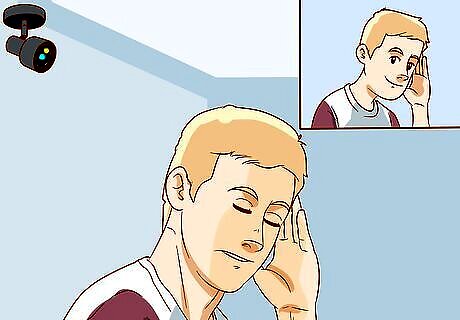
Fake a migraine by avoiding lights, sounds, and people. Migraines have no symptoms that can be seen, so others will have to rely on your story to understand your symptoms. Pretend that you are sensitive to light and sound and go to a dark, quiet room if possible. Common symptoms of a migraine are dizziness, harsh reactions to light and sound, loss of balance, and massive head pain, especially in the temples and back of the head.

Imitate stomach issues by acting nauseous and going to the restroom frequently. Rub your stomach a few times the night before and complain about feeling "off" before you go to bed a little early without fully finishing your food. Fake having diarrhea by spending lots of time in the bathroom and imitating cramps. You can pretend to throw up making choking and guttural sounds, then pour a glass of water into the toilet. Flush it, take a few seconds to clean up, and leave the bathroom. Then, lay on the couch and avoid eating food. Throughout the night, continue to go to the bathroom quite often, but be sure to turn a fan on so people don't get suspicious when they hear no sounds coming out of the bathroom. Use lots of air freshener to cover the "smell", and keep running to the bathroom suddenly the next day.
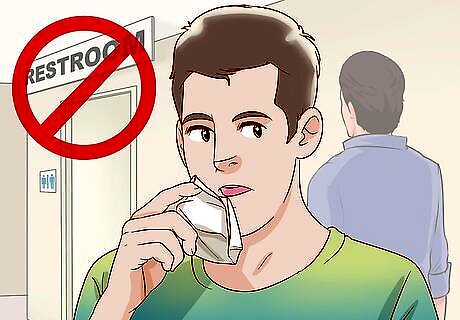
Don't raise suspicion by overacting your symptoms. Sick people generally understate their symptoms, only coughing when they need to and acting nauseous when waves of nausea hit. Practice your fake symptoms in the mirror and convince yourself first before you try to convince others of your illness. It is extremely easy to tell whether a sneeze is real or fake. Avoid faking a sneeze, but if you feel it would make you look more convincing, tickle the underside of your nose with a feather or something similar to trigger a sneezing reflex.
Preparing Ahead of Time

Talk about your "symptoms" the day before you want to take off sick. The night before, start slowly exhibiting signs of illness. Talk about how you are feeling lightheaded, don't eat all of your dinner, and consider going to bed earlier than you usually do - although you don't have to go to sleep. Your goal is to implant the idea that you don't feel well into others' heads rather than outright say, "I feel sick." This helps to make your symptoms seem more convincing to others as you haven't brought up the fact that you might be ill yourself.
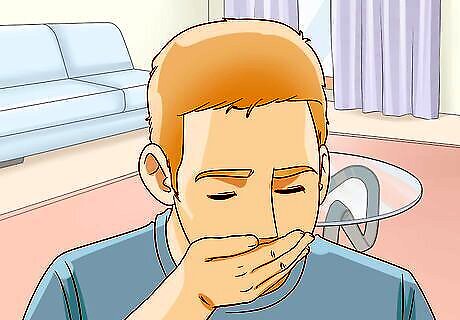
Show symptoms of your chosen illness slowly over the course of a few hours. Nobody suddenly becomes sick, the symptoms slowly build until they become overwhelming to the afflicted person. Start off slow, with some light coughing or sniffling if you want to imitate a cold or the flu, or act more sluggish and react slower to things if you want to imitate nausea.
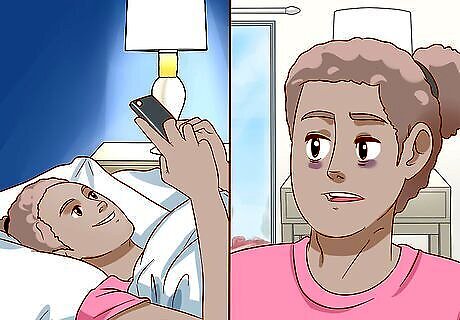
Stay up late to give yourself bags under your eyes, as if you couldn't sleep. Most people who are badly sick have trouble sleeping (unless they've had a lot of drowsy medication). Stay up a few hours later than you usually would to give yourself noticeable bags under your eyes. This can be a physical indicator that you had trouble sleeping to others, when in fact you stayed up having a jolly old time to yourself. You can also use a small amount of eyeshadow to complete the effect, but be careful not to go overboard because if someone notices that you are wearing eyeshadow and aren't actually tired, your act will be shattered.
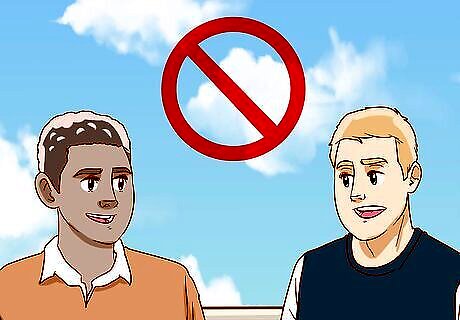
Avoid making plans and being social as if you were sick. The number one things that get people caught faking an illness is getting caught doing something fun and exciting instead of staying home to recover. Take a day away from social media, cancel any plans you made with your friends, and stay at home the whole day. You don't want anybody finding out the truth about your ruse.


















Comments
0 comment